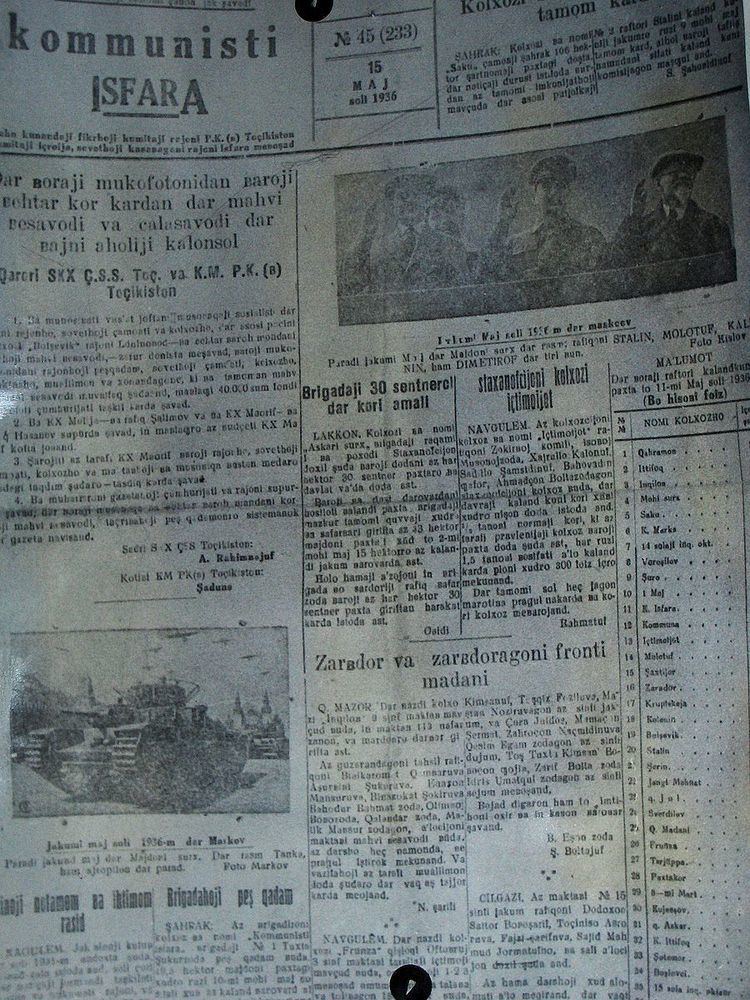 | ||
Fingilish (Persian: فینگلیش) (a portmanteau of Farsi and English) also known as Pingilish (a portmanteau of Persian and English) or Fargelisi (Persian: فارگلیسی) is the way Persian is written using the Latin alphabet (as opposed to the Persian alphabet), or generally the casual romanization of Persian alphabet popularized after computers, emailing and online chat became ubiquitous. The idea of writing Persian using the Latin alphabet was first proposed by Mirza Fatali Akhundzade during Persian Constitutional Revolution but it didn't become so popular during his era. Nowadays this type of writing is commonly used in online chat, social networks, emails and SMS. It developed and spread due to a former lack of software supporting the Persian alphabet, and/or due to a lack of knowledge about the software that was available. Although Persian writing is supported in recent operating systems, there are still many cases where the Persian alphabet is unavailable and there is a need for an alternative way to write Persian with the Latin alphabet.
Contents
The following table contains some examples of romanized Persian words and the ways they are used by Persian chat users.
There is software to help transliterate from Fingilish to Persian and vice versa. For example, Google has added a page to its Google Transliteration set that can be used to transliterate from Fingilish into Persian script. There are also communities and message groups for Fingilish on certain websites like Facebook.
Social Acceptance
Writing Fingilish is confined to (very) informal communication. It is considered to be highly inappropriate to write official or polite messages in Fingilish; this reaches the point that, when there is no way to write the Persian alphabet, communication occurs directly in English rather Fingilish. Uses of Fingilish are often confined to mobile messaging, including SMS, messaging apps as well as online messaging programs. The use of the portmaneu language has lessened in recent years as more mobile phones offer Persian keyboards and users are no longer subjected to Arabic keyboards which miss Persian letters.
Official usage
The Latin script was introduced officially in Tajikistan, for Tajiki Persian, after the Russian Revolution of 1917. The main goal was facilitating an increase in literacy and distance the language from Arabic and Islamic influence. Only lowercase letters were found in the first versions of the Latin variant, between 1926-9. A slightly different version used by Jews speaking the Bukhori dialect, who included three extra characters for phonemes not found in the other dialects: ů, ə̧, and ḩ.[1] (Note that "c" and "ç" are switched relative to their usage in the Turkish alphabet, which has formed the basis for other Latin scripts in the former Soviet Union.)
The unusual character Ƣ is called Gha and represents the phoneme /ɣ/. The character is found in the Common Turkic Alphabet in which most non-Slavic languages of the Soviet Union were written until the late 1930s. The Latin alphabet is not officially used today, although the adoption of it is advocated by certain Pan-Iranism groups.[2]
Problems of current Persian alphabet
Some letters of the alphabet take on different shapes depending on their occurrence at the beginning, middle, or the end of a word or if they occur separately.
A great number of Persian words end with the letter "h". The sound of this letter remains the same, regardless of its location within a word, unless it occurs at the end of a word. The consonant "h" could then retain its normal sound or convert into the vowels "e" or "a". Yet again we are confronted with a phenomenon that results in many different sounding words sharing a common spelling.
Equivalency of letters
The table below shows how the Latin alphabet is used to transliterate the Persian language.
Table of equivalency of letters in Fingilish:
